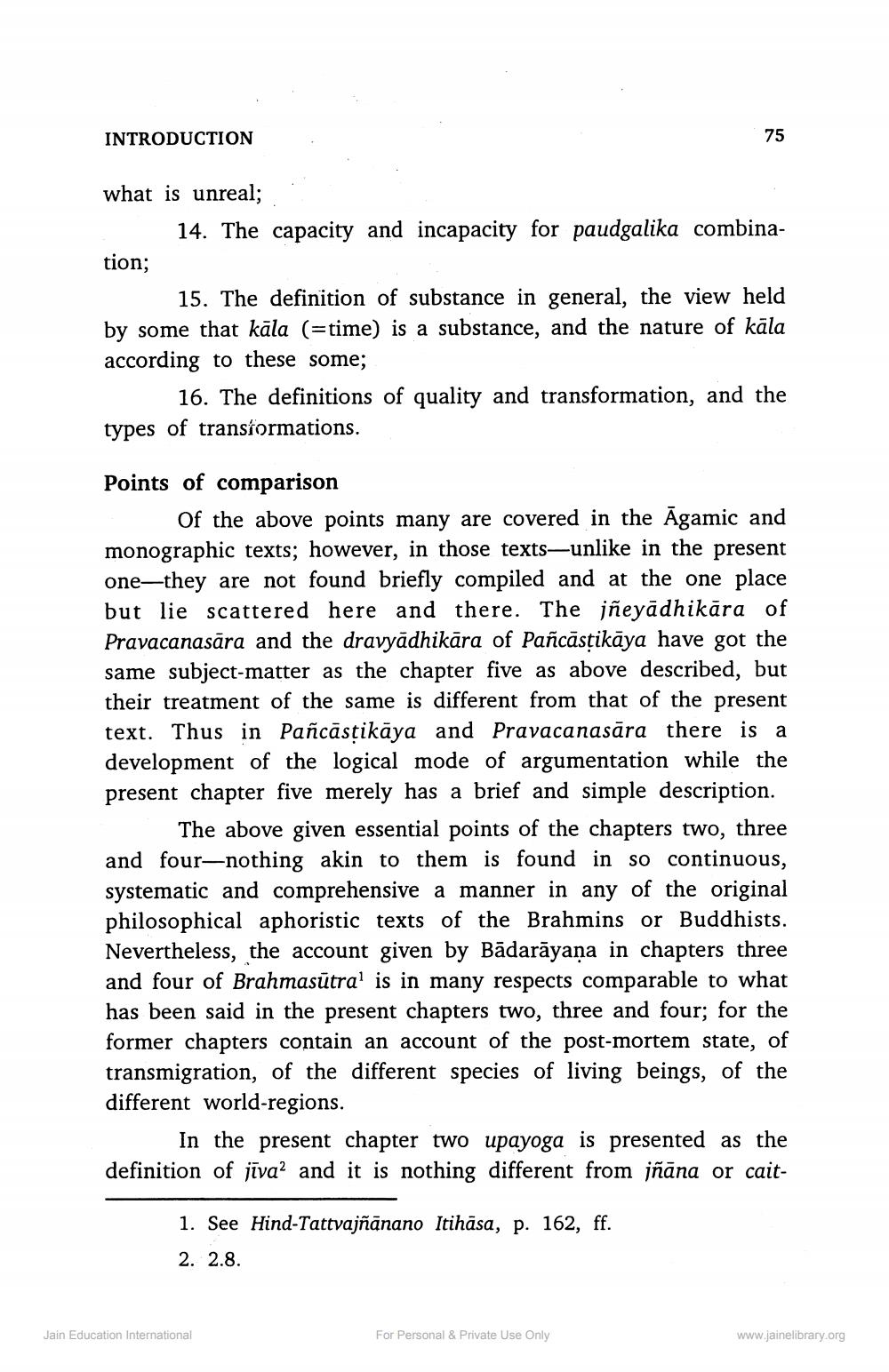________________
INTRODUCTION
what is unreal;
tion;
14. The capacity and incapacity for paudgalika combina
15. The definition of substance in general, the view held by some that kāla (=time) is a substance, and the nature of kala according to these some;
75
16. The definitions of quality and transformation, and the types of transformations.
Points of comparison
Of the above points many are covered in the Agamic and monographic texts; however, in those texts-unlike in the present one-they are not found briefly compiled and at the one place but lie scattered here and there. The jñeyādhikāra of Pravacanasāra and the dravyadhikāra of Pañcāsṭikāya have got the same subject-matter as the chapter five as above described, but their treatment of the same is different from that of the present text. Thus in Pañcāsṭikāya and Pravacanasāra there is a development of the logical mode of argumentation while the present chapter five merely has a brief and simple description.
The above given essential points of the chapters two, three and four-nothing akin to them is found in so continuous, systematic and comprehensive a manner in any of the original philosophical aphoristic texts of the Brahmins or Buddhists. Nevertheless, the account given by Bādarāyaṇa in chapters three and four of Brahmasūtra' is in many respects comparable to what has been said in the present chapters two, three and four; for the former chapters contain an account of the post-mortem state, of transmigration, of the different species of living beings, of the different world-regions.
In the present chapter two upayoga is presented as the definition of jīva2 and it is nothing different from jñāna or cait
1. See Hind-Tattvajñānano Itihāsa, p. 162, ff.
2. 2.8.
Jain Education International
For Personal & Private Use Only
www.jainelibrary.org




